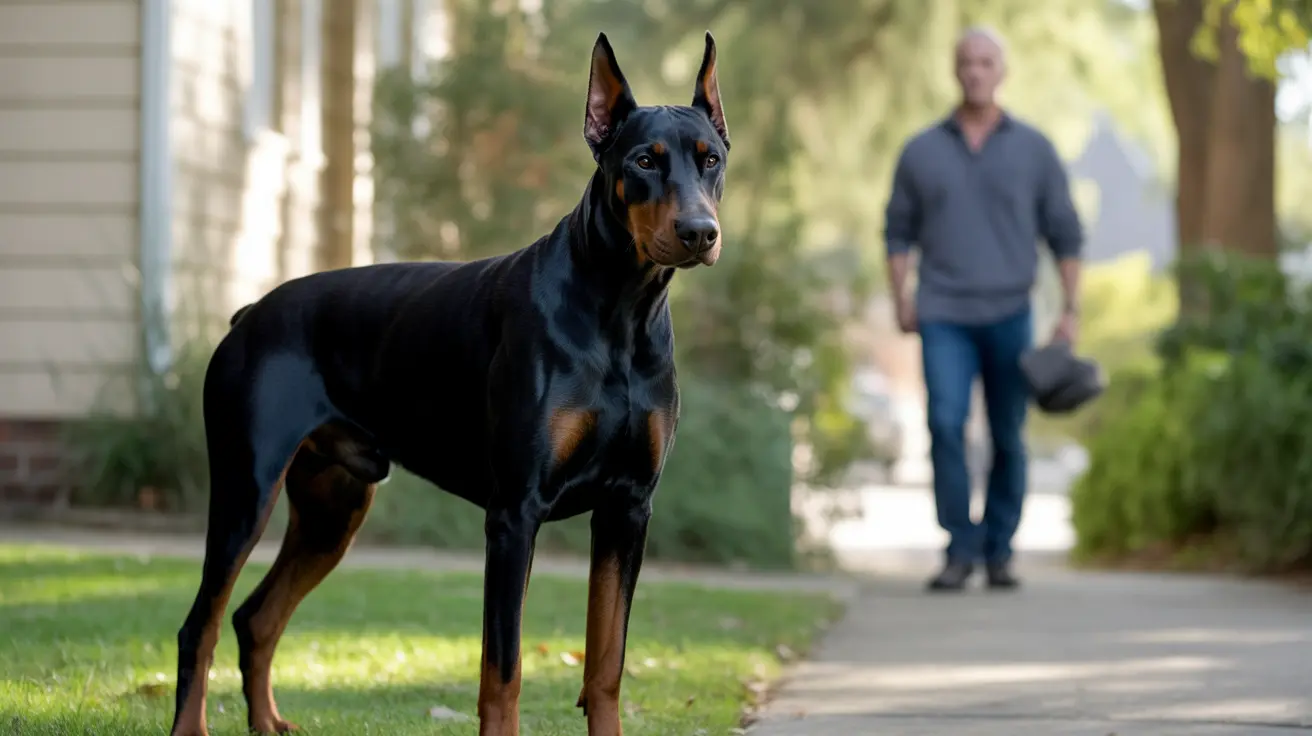The History Behind Doberman Temperament
Originally bred in 19th-century Germany by Karl Friedrich Louis Dobermann, these dogs were developed specifically for protection and guard work. This breeding history has resulted in dogs with strong protective instincts, but contrary to popular belief, aggressive behavior was never the primary breeding goal.
Modern Dobermans have evolved significantly from their working-dog origins. Today's breeding programs emphasize balanced temperaments and family-friendly characteristics while maintaining the breed's legendary intelligence and loyalty.
What Scientific Studies Say About Doberman Aggression
Research consistently shows that Dobermans rank lower in overall aggression than many people might expect. A landmark 2008 study revealed that while Dobermans showed some tendency toward stranger-directed aggression, they demonstrated remarkably low aggression toward their owners.
Bite statistics from the CDC and other organizations further support this finding. Between 1979 and 1998, Dobermans were responsible for significantly fewer fatal attacks compared to several other large breeds, including Pit Bulls and Rottweilers.
Understanding Doberman Protective Instincts
What many people perceive as aggression in Dobermans is actually protective behavior. These dogs form intense bonds with their families and may show defensive responses when they perceive threats. This behavior is typically predictable and situation-specific, rather than random aggression.
- Alert barking at unusual sounds or approaches
- Positioning themselves between their family and strangers
- Careful observation of new situations
- Quick response to perceived threats
Training and Socialization: The Key to a Well-Adjusted Doberman
Early socialization and consistent training play crucial roles in developing a well-balanced Doberman. Exposing puppies to various environments, people, and situations during their formative weeks helps prevent fear-based reactions later in life.
- Starting socialization as early as possible
- Using positive reinforcement techniques
- Maintaining consistent boundaries
- Providing mental and physical stimulation
- Enrolling in structured obedience classes
Factors That Can Influence Doberman Behavior
Several factors can affect a Doberman's temperament and behavior:
- Quality of breeding and genetic background
- Early life experiences and socialization
- Training methods and consistency
- Physical health and exercise levels
- Environmental stress factors
Responsible ownership and proper care significantly impact whether a Doberman develops aggressive tendencies. Most behavioral issues can be prevented through proper management and training.
Frequently Asked Questions
Are Dobermans naturally aggressive or is their aggression situational?
Dobermans are not naturally aggressive; their behavior is typically situational and protective rather than aggressive. With proper training and socialization, they display balanced temperaments and make excellent family companions.
How does Doberman aggression compare to that of other dog breeds like Pit Bulls or Rottweilers?
Statistical data shows that Dobermans are involved in fewer bite incidents and fatal attacks compared to several other large breeds. They rank lower in overall aggression statistics than Pit Bulls, Rottweilers, and even some smaller breeds.
What are common triggers for aggressive behavior in Dobermans, and how can owners prevent it?
Common triggers include perceived threats to family members, territorial invasion, and fear from lack of socialization. Prevention involves early socialization, consistent training, and maintaining a stable environment.
Can proper training and socialization reduce aggression in Dobermans effectively?
Yes, proper training and socialization are highly effective in preventing and managing aggressive behaviors in Dobermans. Early intervention and positive reinforcement techniques yield the best results.
What should I know about Doberman bite force and attack statistics before getting one as a pet?
While Dobermans have a strong bite force, they are statistically less likely to be involved in serious bite incidents compared to many other breeds. The key to safety lies in responsible ownership, proper training, and understanding the breed's protective nature.
Conclusion
Based on scientific evidence and expert analysis, Dobermans are not inherently more aggressive than other dog breeds. Their reputation for aggression largely stems from their history as guard dogs and media portrayal rather than actual behavioral tendencies. With proper training, socialization, and responsible ownership, Dobermans typically display loyal, intelligent, and balanced temperaments that make them excellent family companions.






